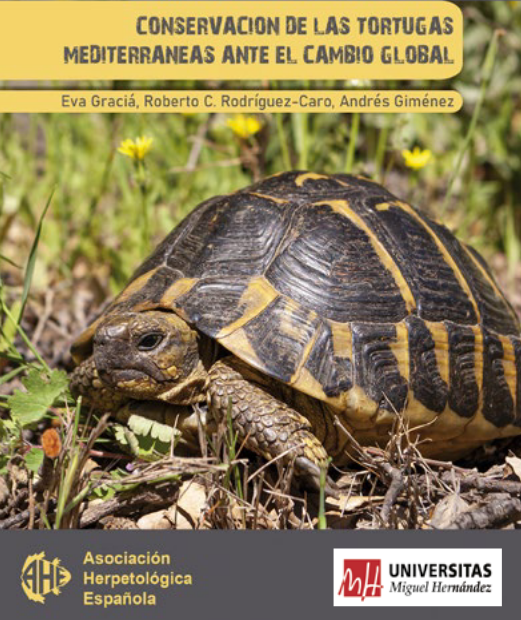Graciá, E., Rodríguez-Caro, R.C., & Giménez, A. (eds.). 2025. Conservation of Mediterranean tortoises under global change (pp. 180). Asociación Herpetológica Española.







Graciá, E., Rodríguez-Caro, R.C., & Giménez, A. (eds.). 2025. Conservation of Mediterranean tortoises under global change (pp. 180). Asociación Herpetológica Española.

European Commission: Directorate-General for Environment, Bowles, P., Doronin, I. V., Carretero, M. A., Cogălniceanu, D. et al., European red list of reptiles, Publications Office of the European Union, 2025, https://data.europa.eu/doi/10.2779/5108
This updated edition of the European Red List presents a comprehensive summary of the conservation status of reptile species in Europe, evaluated in accordance with the IUCN Red List Categories and Criteria (IUCN, 2012a) and guided by both global (IUCN, 2022) and regional (IUCN, 2012b) IUCN standards. It constitutes a fully revised second edition that integrates new data and reflects the taxonomic changes that have occurred since the publication of the first edition (Cox and Temple, 2009).
The assessment provides a region-wide overview of European reptiles and builds upon previous work to ensure its continued relevance for informing present-day conservation efforts. It identifies species at risk of extinction within Europe and the EU27 Member States, highlights priority areas for protection, and outlines the main threats facing reptile populations. This information serves as a foundation for evidence-based policy and conservation measures aimed at improving their status.
This European Red List represents a major update of the initial Status and Distribution of European Reptiles (Cox and Temple, 2009), incorporating extensive new datasets derived from published sources as well as from the personal databases of assessors and reviewers. It reflects 15 years of additional research and a significantly enhanced understanding of European reptiles and their vulnerability to various threats. The wealth of field data and accumulated expertise underpin a robust trend analysis contributed by numerous specialists across the region.
Toad abundance declined in all decades since 1973 in Switzerland (33% abundance reduction) and since 1985 in Great Britain (41% reduction), but there were significant regional recoveries in Britain since 2013. Leer más.
As expected, body size increased nonlinearly with both age estimate methods. However, Spearman’s correlation and model 2 linear regression suggest limited precision and bias when transposing results between different methods. Overall, the cephalic rings method faced practical challenges for lacertid species in the genus Podarcis. Leer.más.
![]()
The results confirm the ecological importance of these karstic springs habitats, which support high biodiversity, species interactions, and serve as key points for studying the adaptive responses of Proteus anguinus and other subterranean species. Leer más.